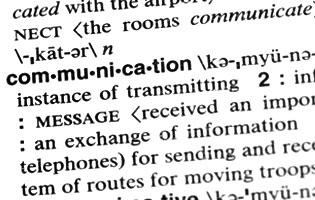


B
Balloon Payment:
A large principal payment that typically becomes due at the conclusion of the loan term. Generally, it reflects a loan amortized over a longer period than that of the term of the loan itself (i.e. payments based on a 25 year amortization with the principal balance due at the end of 5 years). See "Bullet Loan".
Bankrupt:
The condition or state of a person (individual, partnership, corporation, etc.) who is unable to repay it's debts as they are, or become, due.
Bankruptcy:
Proceedings under federal statures to relieve a debtor who is unable or unwilling to pay its debts. After addressing certain priorities and exemptions, the bankrupt’s property and other assets are distributed by the court to creditors as full satisfaction for the debt. See also: "Chapter 11".
Base Rent:
A set amount used as a minimum rent in a lease with provisions for increasing the rent over the term of the lease. See also "Escalation Clause", "Operating Expense Escalation" and "Percentage Lease".
Base Year:
Actual taxes and operating expenses for a specified base year, most often the year in which the lease commences. Once the base year expenses are known, the lease essentially becomes a dollar stop lease.
Below-grade:
Any structure or a portion of a structure located underground or below the surface grade of the surrounding land.
Building Classifications:
Building classifications in most markets refer to Class "A", "B", "C" and sometimes "D" properties. While the rating assigned to a particular building is very subjective, Class "A" properties are typically newer buildings with superior construction and finish in excellent locations with easy access, attractive to credit tenants, and which offer a multitude of amenities such as on-site management or covered parking. These buildings, of course, command the highest rental rates in their sub-market. As the "Class" of the building decreases (i.e. Class "B", "C" or "D") one component or another such as age, location or construction of the building becomes less desirable. Note that a Class "A" building in one sub-market might rank lower if it were located in a distinctly different sub-market just a few miles away containing a higher end product.
Building Code:
The various laws set forth by the ruling municipality as to the end use of a certain piece of property and that dictate the criteria for design, materials and type of improvements allowed.
Building or "Core" Factor:
Represents the percentage of Net Rentable Square Feet devoted to the building's common areas (lobbies, rest rooms, corridors, etc.). This factor can be computed for an entire building or a single floor of a building. Also known as a Loss Factor or Rentable/Usable (R/U) Factor, it is calculated by dividing the rentable square footage by the usable square footage. See also "Rentable/Usable Ratio".
Building Standard:
A list of construction materials and finishes that represent what the Tenant Improvement (Finish) Allowance/Work Letter is designed to coverwhile also serving to establish the landlord's minimum quality standards with respect to tenant finish improvements within the building. Examples of standard building items are: type and style of doors, lineal feet of partitions, quantity of lights, quality of floor covering, etc.
Building Standard Plus Allowance:
The landlord lists, in detail, the building standard materials and costs necessary to make the premises suitable for occupancy. A negotiated allowance is then provided for the tenant to customize or upgrade materials. See also "Workletter".
Build-out:
The space improvements put in place per the tenant's specifications. Takes into consideration the amount of Tenant Finish Allowance provided for in te lease agreement. See also "Tenant Improvement Allowance"
Build-To-Suit:
An approach taken to lease space by a property owner where a new building is designed and constructed per the tenant’s specifications.
Bullet Loan:
Any short-term, generally five to seven years, financing option that requires a balloon payment at the end of the term and anticipates that the loan will be refinanced in order to meet the balloon payment obligation. Essentially, should the refinancing not be available, often due to the property not performing as anticipated, the borrower is "shot" and the property is subject to foreclosure. An example of this is when a developer borrows to cover the costs of construction and carry-costs for a new building with the expectation that it would be replaced by long-term (or "permanent") financing provided by an institutional investor once most of risk involved in construction and lease-up had been overcome resulting in an income-producing property.
A
B
C
D
E
F
G
H
I
J
K
L
M
N
O
P
Q
R
S
T
U
V
W
X
Y
Z
View All
GLOSSARY

